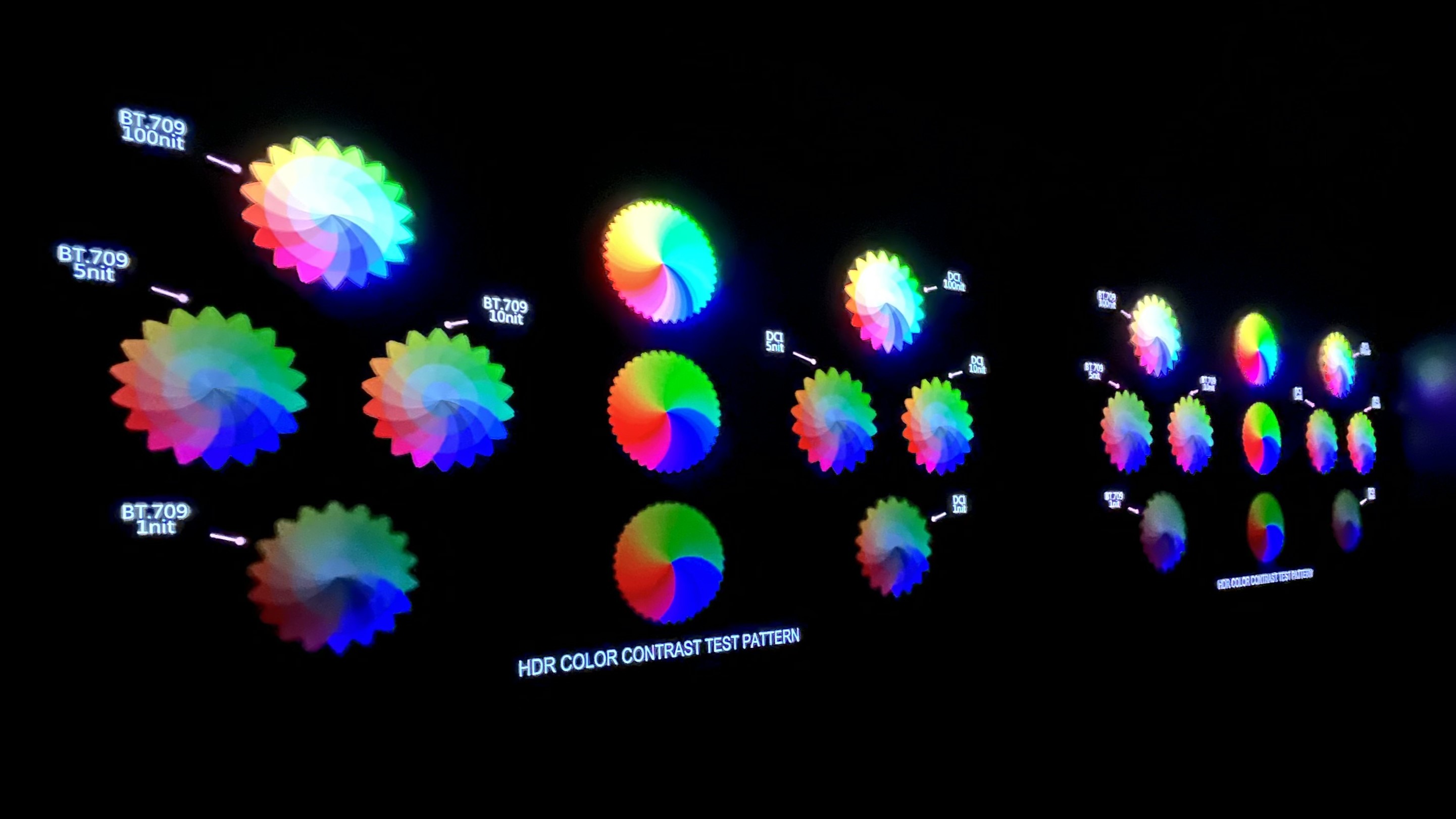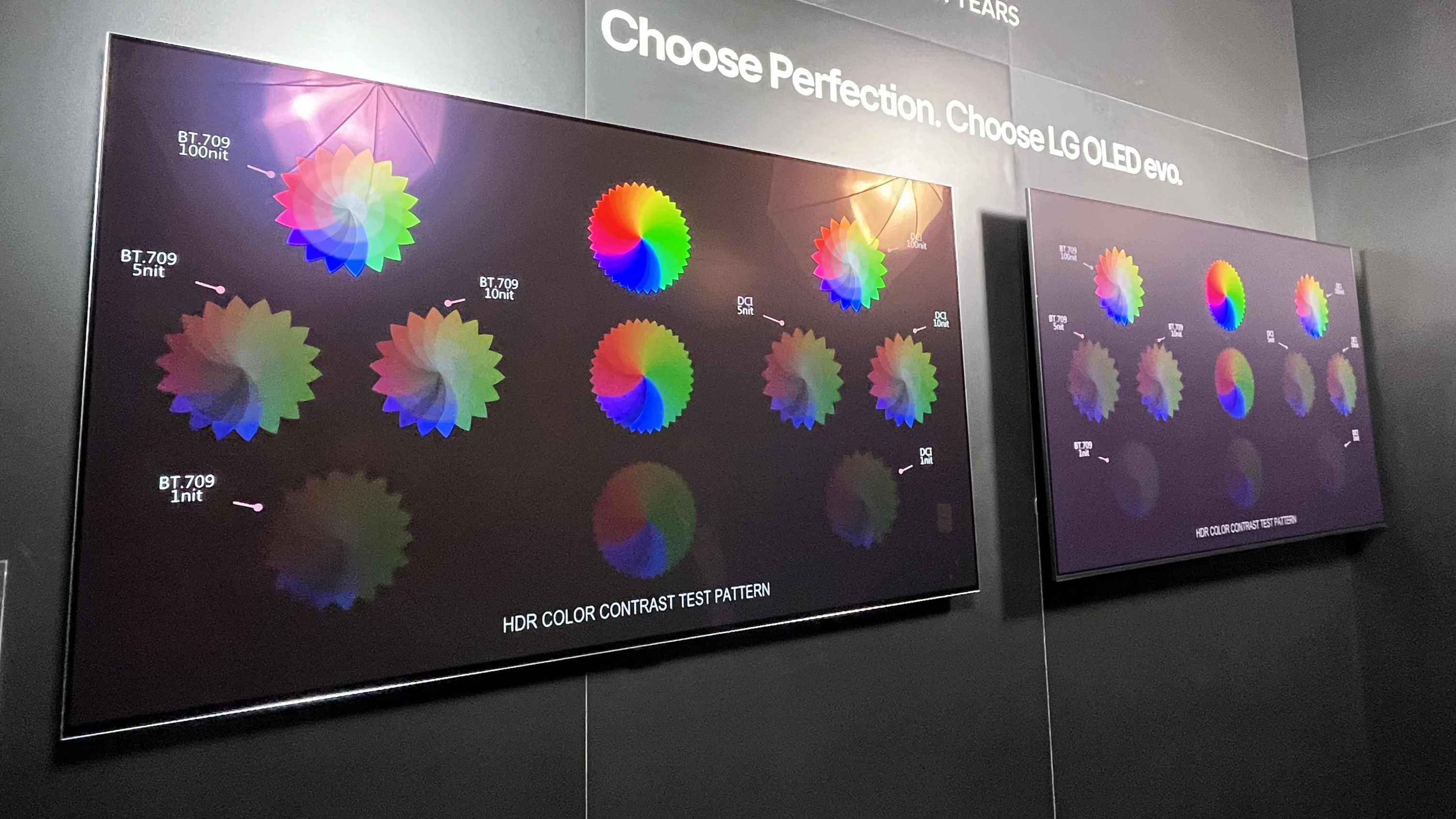
At the recent CEDIA Expo 2024, LG didn’t have new products to unveil, but it did have nearly its full AV product lineup on display for attendees to check out. One highlight of the booth was a side-by-side display of the company’s LG G4 and LG C4 OLED TVs, two of the best TVs of 2024.
Having reviewed the mid-range C4, it was interesting to see it set up alongside the company’s flagship G4 OLED, where that model’s brightness-boosting Micro Lens Array (MLA) tech gave it a clear picture quality advantage. It’s not that the C4 looked bad; rather, it's that LG’s mid-range OLED, which normally looks fantastic in dim-light viewing conditions, struggled to compete in the brightly lit trade show floor environment where the two TVs were set up. The G4’s picture, in comparison, had bold colors and plenty of brightness punch.
Another side-by-side TV comparison in LG’s booth was held behind closed doors in a dark room, and this one turned out to be equally compelling. The comparison involved the G4 and the Samsung S95D, the company’s flagship OLED TV for 2024. Both the G4 and S95D earned five-star ratings in our reviews and are considered top TV choices for video enthusiasts who prioritize picture quality above all else and are willing to pay for it. Peak brightness for both models is similarly high (although the Samsung had an edge over the LG in our measurements), and both check off all other picture performance boxes.
One feature these two premium OLED TVs share is an anti-reflection screen that helps to maintain picture quality in bright ambient light conditions – a trade show floor, for example, or your living room on a sunny Saturday afternoon when the Mets are playing the Phillies. As it turns out, Samsung and LG’s top OLED TVs handle reflections in bright and dark environments in very different ways, and LG’s demo provided a very clear example of this.


A blacker shade of gray
For its demo, LG had G4 and S95D OLED TVs set up next to each other with portable lamps – the same kind used for photography or video production – positioned in front of both sets, each set to its Filmmaker picture mode. Starting with lights on, the LG (the left TV in the above image) more directly reflected the lights, which could easily be seen in the black areas of the video test pattern being displayed on both TVs. In contrast, the Samsung (the TV at right in the above image) effectively diffused the light, resulting in no visible screen reflections, even with a lamp directly in front of it.
Aside from differences in screen reflections on both TVs, what was equally interesting was the black-level differences. The LG maintained good contrast and black depth with the lights on, while the Samsung displayed an elevated black level that was more of a dark gray, which can easily be seen in the above picture of the side-by-side demo. That’s something you wouldn’t notice when watching sports or news programs where the image is comprised mostly of bright areas with few shadows. But when watching movies or darker programs like House of the Dragon on Max in a bright room, Samsung’s elevated, gray-ish blacks would likely be apparent.
This brings us to the second image in the gallery above (click the arrow to advance), which shows both TVs with lights out in LG’s dark demo room. In these conditions, LG and Samsung proved equally capable of displaying the perfectly deep blacks we expect to see in the best OLED TVs, and LG used movie clips along with test patterns to demonstrate this.
My takeaway from the demo was that both the LG G4 and Samsung S95D are equally good TVs worthy of their five-star ratings. However, their very different handling of light reflections presents the premium OLED buyer with important choices. Do you want a TV that’s completely immune from screen reflections or one that’s susceptible to some reflections but can display deep black even in a well-lit room?
Samsung’s OLED Glare-free anti-reflective tech does the best job I've seen on any TV when it comes to eliminating screen glare. Combined with its high brightness, the S95D is well-equipped to display any image in any lighting condition – but with slightly elevated blacks in bright rooms, as seen in LG's demo.
The LG G4, on the other hand, is capable of displaying bright images with strong contrast and deep blacks even when lining the wall of a trade show booth with lights beaming from overhead. Put a lamp in its path, however, and you are much more likely to see that light reflected onscreen than with the Samsung S95D – something LG’s demo confirmed.
Ultimately, any choice between the two should come down to what kind of content you watch during the daytime or with room lights on. Mostly sports? No problem – both TVs will look fantastic. But if you also watch movies – or House of the Dragon episodes – and don't want to dim the lights, you may want to give the LG G4 a closer look.







